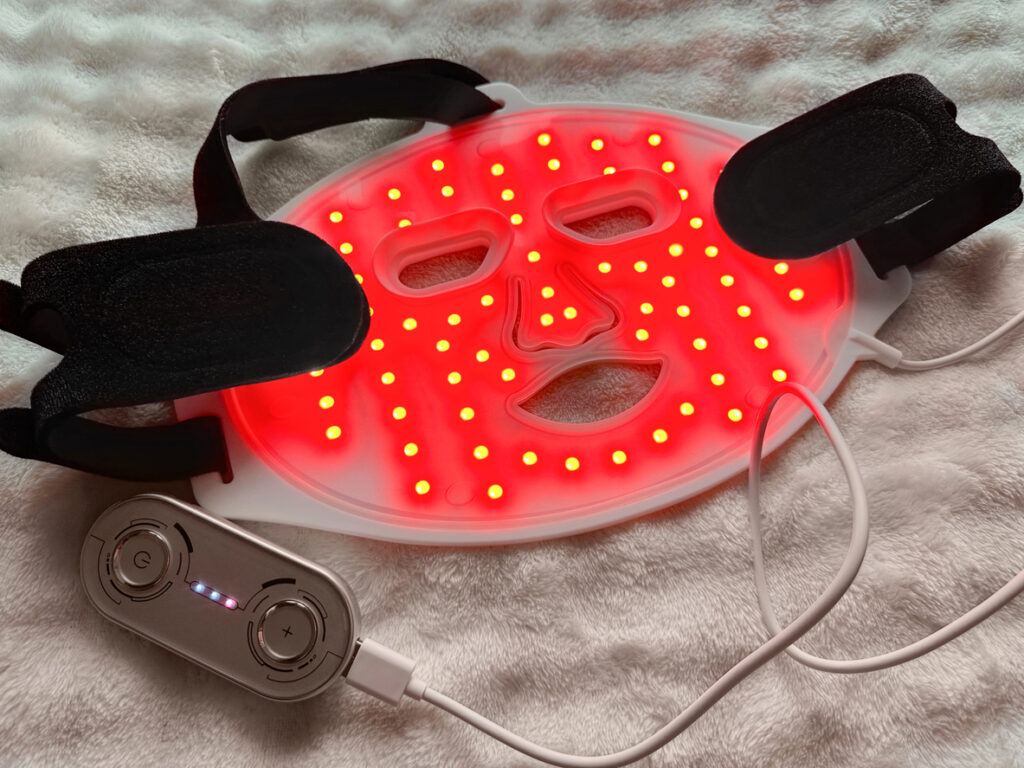At-home red and/or blue light-emitting diode (LED) devices appear safe and effective for treating mild-to-moderate acne vulgaris, according to a recent review and meta-analysis in JAMA Dermatology.
Both wavelengths showed efficacy alone, and more so in combination—findings which are expected to boost dermatologists’ confidence in recommending these devices to patients.
Investigators included six randomized clinical trials lasting from two days to 12 weeks, encompassing a total of 216 participants aged 12 to 50 who predominantly had mild-to-moderate acne. Treatment regimens ranged from two to 15 minutes twice daily. Compared to control treatments, LED devices yielded greater reductions in inflammatory and noninflammatory lesions (45.3% and 47.7%, respectively), along with greater improvement in Investigator Global Assessment (IGA) scores (45.7%).
Complementary Pairing
“We found that at-home LED light devices that use red and/or blue light can safely and effectively reduce acne,” senior author John S. Barbieri, MD, MBA, tells The Dermatology Digest(R). He is an Assistant Professor of Dermatology at Harvard Medical School and Director of the Advanced Acne Therapeutics Clinic at Brigham and Women’s Hospital, both in Boston, MA. “People using these devices had fewer pimples and clearer skin after typically around four to 12 weeks of regular use,” Dr. Barbieri adds. “These benefits were seen with both red and blue light devices, and especially when devices included both colors together.”
Red light devices in the study operated at 630–670 nm, versus 414–445 nm for blue light. “Blue light helps target the bacteria involved in acne while red light reduces inflammation,” he says. “Beyond that, we don’t have much data to guide us on which devices are best. This is probably a situation where you don’t want to buy the least expensive one, as it may be low quality, and you also probably don’t need the most expensive one, as it may not be better than those with a more middle-tier price.”
LEDs vs. Topical Monotherapy
Nevertheless, Dr. Barbieri tells patients that, “There’s some decent evidence that these devices can help improve mild-to-moderate acne, potentially on par with a single-medication topical regimen, when used consistently.”
Although studies comparing combination red and blue LED devices with topical acne medications are rare, published comparisons against topical benzoyl peroxide have shown higher rates of IGA improvement and greater inflammatory-lesion reductions for the LED devices.
The most commonly reported adverse effects in the review, mainly dryness, erythema, and discomfort, were transient and mild. With no serious adverse reactions reported, Dr. Barbieri says that at-home LED devices for acne appear to be safe and relatively easy to use and can likely complement other over-the-counter and prescription treatments.
“These results give dermatologists more confidence in recommending at-home LED devices to their patients. It’s helpful to know that these devices really can make a difference, especially for people with mild-to-moderate acne who are looking for non-medication options or want to add something extra to their routine.” At-home LED devices also can be useful in pregnancy, he adds, when many other standard acne treatments are not considered safe.


